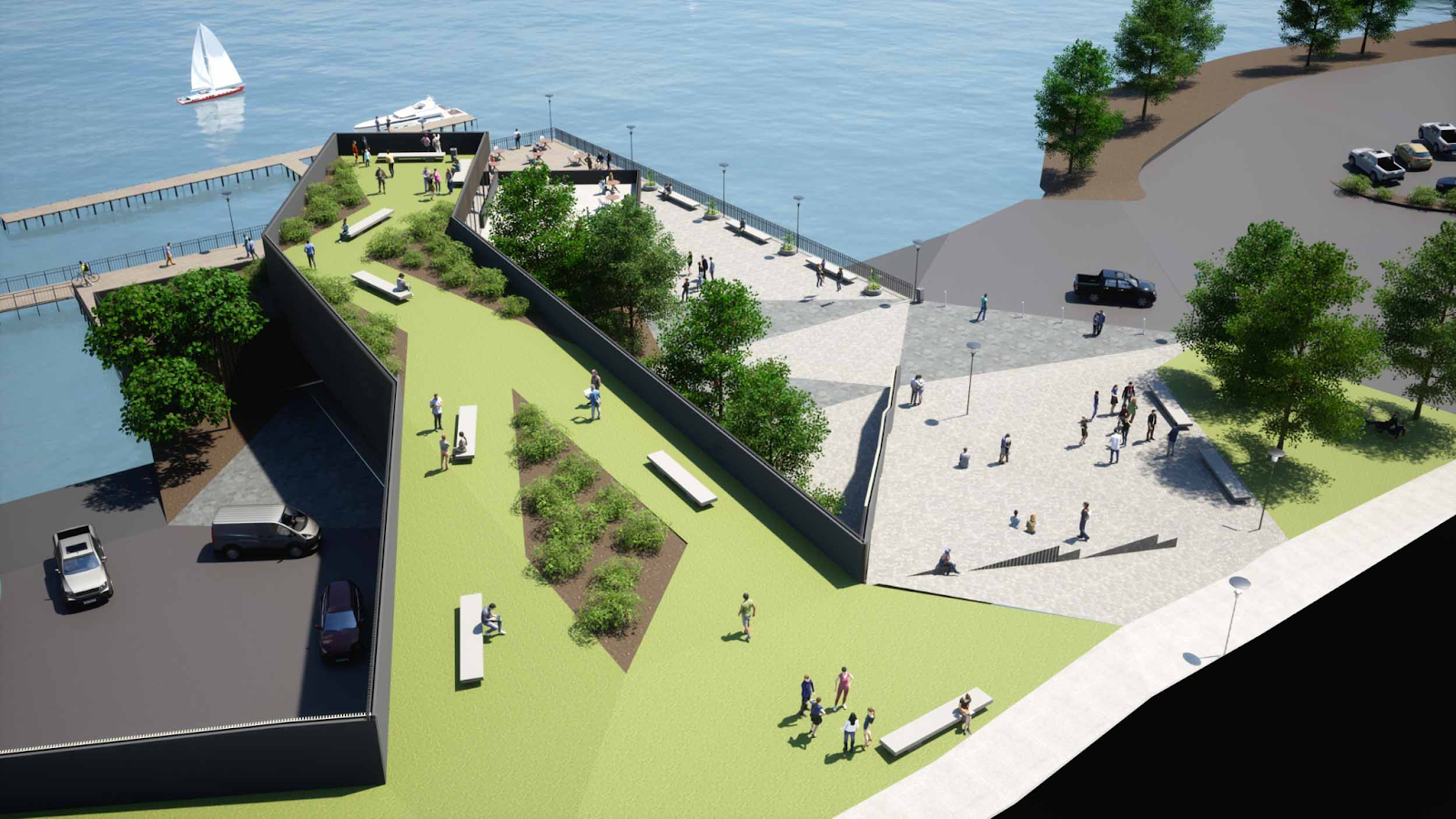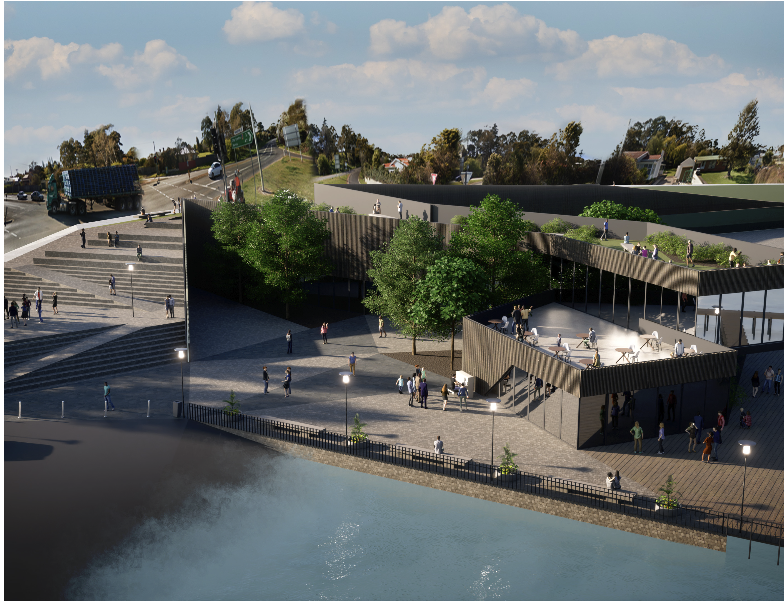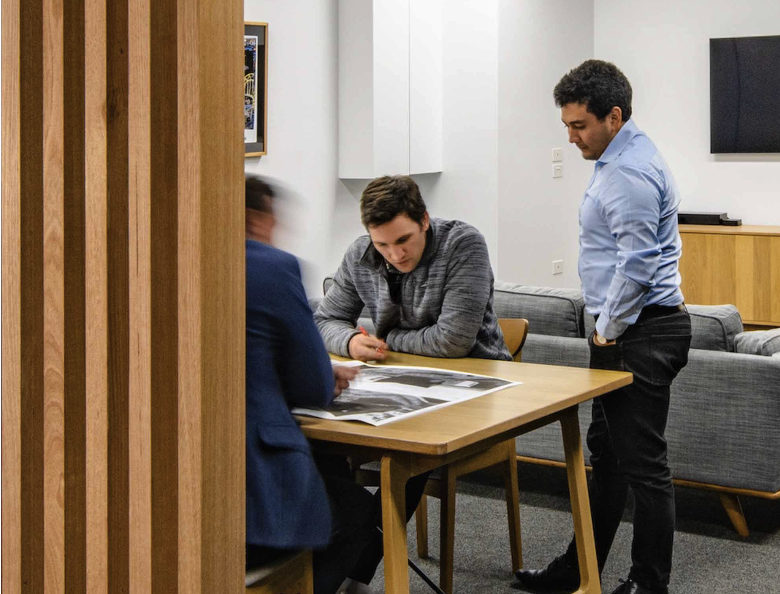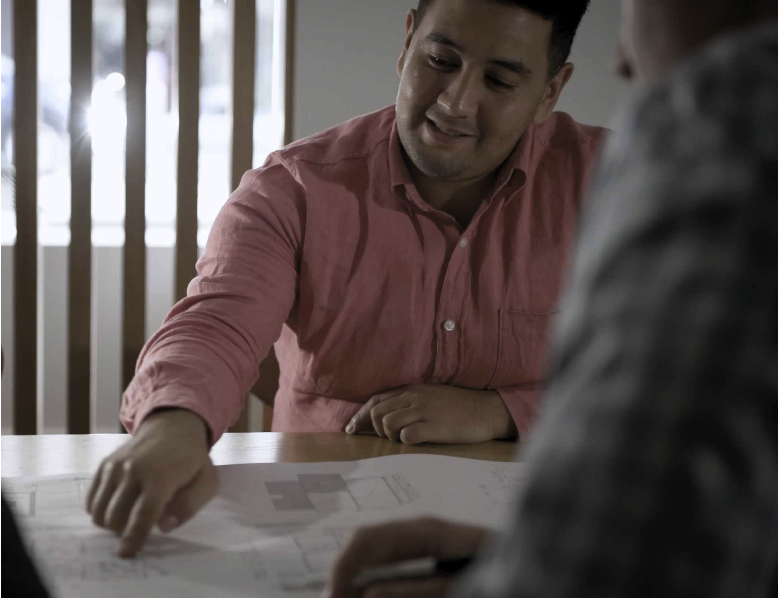
Master Planning Architecture: Creating a Vision for the Future
Master planning architecture can create the DNA for a future community. Transcending any single site, this process involves designing entire neighbourhoods and districts. These large-scale projects carry long-term implications for the people who live, work and move through them.
By aligning architectural insight with civic responsibility, master planning architects help create projects that respond to the present while being adaptable to future needs. From balancing infrastructure and community assets to protecting natural resources, a well-designed master plan provides a resilient foundation for sustainable development and the continued community flourishing.
Beyond Buildings: What is a Master Plan?
Master planning is the strategic backbone of complex developments. Unlike the design of a single building, master planning outlines the overarching framework for how a site will evolve. It also proactively guides how people will interact with spaces across different scenarios. It organises land use, infrastructure, open spaces and community amenities into a coordinated structure that supports sustainable growth.
This process is often applied to large scale projects, from new suburban precincts to revitalised inner-city areas. It defines how private buildings, public spaces and other elements, such as transportation systems, relate to one another. The goal is to enhance both functionality and liveability, guiding decision making over years, or even decades.
Key Benefits of Strategic Master Planning
More than an aspirational vision, an effective master plan is a practical tool that gives investment certainty, guides the phased delivery of the entire project and benefits the community. A well drafted and implemented master plan delivers:
- Cohesion across all project phases: Each development stage aligns with and supports an overarching vision.
- Economic growth: Thoughtful planning attracts investment and fosters job creation.
- Stronger communities: Planning documents can integrate amenities such as community facilities, parks and open spaces for the public benefit.
- Land and resource efficiency: Master planning helps prevent sprawl and promotes higher land yield.
- Increased certainty: Developers, councils and other stakeholders gain confidence in project viability and approval pathways.
- Sustainability embedded early: Environmental values are reflected in land use, mobility and energy systems from the outset.

The Collaborative Blueprint: The Importance of Stakeholder Engagement
Collaboration is key to effective master planning. Thoughtful stakeholder engagement goes beyond box-ticking to ensure that decisions reflect the needs and aspirations of all parties involved. This includes community members, clients, urban planners, architects, government bodies and other stakeholders like utility providers or Indigenous groups.
At Starbox Architecture, our guiding objective is to build consensus and secure buy-in, so the final master plan earns broad support and stands up to future change.
Ensuring Every Voice is Heard
Consultation methods can include public meetings, online surveys and design workshops. This participatory approach fosters transparency and forgrounds community needs from the outset, bolstering trust for better long-term outcomes.
The Building Blocks of a Master Plan
The key elements of any master plan fall under two main categories: zoning/land use and infrastructure/utilities:
Land Use Planning and Spatial Relationships
Land use planning allocates space for residential, commercial, recreational and institutional purposes. By clearly defining these zones, planners ensure that key services and amenities are accessible and logically placed.
Spatial relationships describe how these zones interact. A walkable, integrated layout improves access, encourages social connection and reduces reliance on cars. The aim is to create places where everyday needs are met within a short distance, supporting public health and wellbeing as well as environmental sustainability.

Connecting Communities: Infrastructure, Utilities and Transportation
Infrastructure planning goes far beyond roads. It includes water and energy systems, sewerage, stormwater management and digital connectivity. As cities expand, these utilities must be future-proofed.
Transportation systems are also essential. Whether it's public transport, bike paths, or pedestrian networks, designing with mobility in mind underpins equity, economic participation and sustainability. Technological advancements, such as EV charging stations or smart traffic control offer great potential for efficiency and environmental gains.
Case Study: Smart Technologies for Urban Mobility
A key part of modern master planning is embedding smart technologies to improve how people move through our cities. In Melbourne, for example, the tram network uses Transit Signal Priority to improve reliability. As a tram approaches an intersection, it communicates with the traffic signals, which can extend a green light phase to allow it to pass through without delay. This strategic use of infrastructure makes public transport more efficient and a more attractive option for commuters.
This smart management extends to private vehicles as well. In Launceston, the City Council has rolled out smart parking technology, using in-ground sensors to monitor vacant and occupied parking bays. This real-time information is displayed on large digital signs on key thoroughfares, guiding drivers directly to available spaces. By reducing the time cars spend circling for a park, this system helps to ease traffic congestion and improve the urban environment for the entire community.
All these systems must be planned not in isolation, but in support of projected population growth and community needs.
Our Framework: A Guide to the Master Planning Process
A successful project requires a clear, rigorous process. We guide our clients through our master planning process in three distinct stages, ensuring all critical aspects and environmental considerations are addressed, from the initial analysis phase to the final implementation strategies.

Phase 1: Analysis and Understanding
This phase is about collecting data and understanding the site in its full context. The learning gleaned during this phase informs and guides the entire project throughout its development. Activities include:
- Site analysis, including topography, climate, access and heritage features
- Mapping physical constraints like flood zones or vegetation overlays
- Considering environmental factors, such as biodiversity or bushfire risk
- Studying economic considerations, including land value, employment trends and demand drivers
- Reviewing existing infrastructure, utilities and transport access
This comprehensive foundation guides all subsequent decision making and ensures the plan is grounded in reality.
Phase 2: Developing the Vision
Using the insights from Phase 1, the design team develops a guiding vision. This is expressed through a conceptual framework: a flexible layout plan supported by diagrams, scenarios and design principles.
This is the creative heart of the master plan. It’s where high-level ambitions (like sustainability, housing affordability or cultural recognition) are given physical form. Multiple scenarios may be tested before refining a preferred concept.
Phase 3: Implementation Strategies and Ensuring Compliance
The final phase translates vision into action. This includes:
- Developing phased implementation strategies for land release and infrastructure delivery
- Producing detailed plans and documentation
- Ensuring compliance with relevant state and local planning policies
- Identifying metrics for monitoring success over time
This stage also prepares the project for funding bids, investment attraction or planning permit submissions.
What Makes a Good Master Plan?
A well crafted master plan moves beyond technical drawings to become a living document for a thriving community. At its core, it must be:
- Visionary yet realistic: Bold in ambition, grounded in feasibility
- Flexible and adaptable: Able to respond to future needs and technological advancements
- Sustainable: Minimises environmental impact and enhances community well-being
- Community-focused: Informed through dialogue with local stakeholders and attuned to their aspirations
At Starbox, we aim for all of our master planning architecture projects to meet these benchmarks.
Case Study: The Evolution of Australian Waterfronts
Two of Australia’s most successful urban renewal projects, Melbourne's Docklands and Brisbane’s South Bank, are powerful examples of adaptive, community-led master planning. While the Docklands project involved the multi-decade renewal of a 190-hectare historic but obsolete waterfront, South Bank was developed on the 42-hectare site that hosted World Expo '88. The success of both lies in their evolution.
South Bank’s initial 1992 design was comprehensively updated in 1998, and its new 'Future South Bank Master Plan' was recently shaped by over 25,000 pieces of public feedback. This demonstrates how a master plan must be a living document, able to adapt over generations to changing community needs.

Who Commissions a Master Plan? The Clients and Their Vision
Master plans are commissioned by a diverse range of organisations, from national governments to private companies and major institutions. Understanding the client and their core drivers is the first step in any successful master planning process, as their objectives fundamentally shape the project's scope, governance and ultimate form. The clients we work with typically fall into three main categories.
Public Sector Patrons: Governments and Authorities
Public sector clients, including state governments and their statutory authorities, are driven by broad policy objectives aimed at serving a public good. Their motivations are rooted in stimulating economic growth, delivering critical infrastructure or executing large-scale urban renewal. A prime example in Victoria is Development Victoria, which manages major urban renewal projects like the 480-hectare Fishermans Bend.
The key role of the architect in these projects is to translate broad policy goals into a physical framework for community improvement.
Private Sector Visionaries: Property Developers
Private property development companies are key clients for master planning services. Their primary driver is commercial: to develop significant land parcels into new communities that generate a return on investment. The challenge for the design team is to balance this commercial necessity with the creation of authentic, livable communities.
Institutional Stewards: Universities and Corporations
This category consists of organisations that commission master plans for the strategic, long-term development of their extensive land holdings. For these clients, the master plan is a crucial roadmap for guiding their own growth and creating a cohesive identity to enhance their core mission. Universities are a quintessential example; institutions like the University of Melbourne and Monash University rely on master plans to guide their campus evolution over decades. For these clients, the master plan acts as a critical tool for long-term stewardship, providing a logical roadmap for future growth and ensuring that new buildings and infrastructure are delivered cohesively over time.
Master Planning Architecture FAQs
How long does the master planning process take?
Timelines vary depending on the project’s scale and complexity. A smaller site may take 3–6 months; for large developments, it may extend beyond a year due to the detailed analysis and stakeholder engagement involved.
What is the difference between master planning and urban design?
Master planning provides the big-picture layout of zones, infrastructure and land use. Urban design zooms in: shaping the character and feel of streets, parks and civic spaces between buildings.
What types of professions make up a master planning design team?
A multi-disciplinary team can include architects, town planners, landscape architects, engineers (civil, traffic, environmental) and specialists in sustainability, heritage or economics, as well as consultants representing Indigenous communities.
How does master planning architecture support sustainability?
Master planning integrates sustainability at a foundational level by making deliberate choices about land use, environmental stewardship, designing around public transport and walkability, as well as embedding green infrastructure. This framework facilitates sustainable growth while maximising public utility.
Which environmental factors do you focus on?
We assess biodiversity, water catchments, flood risk, solar access, soil quality, bushfire threat and more. These inform layout, building orientation and service infrastructure. Mitigating environmental impact is a core planning objective.
What kinds of questions are answered by a master plan?
A well-prepared master plan responds to the following questions:
- What can be built, where, and when?
- How will people move around the site?
- Where are the parks, schools and community services located?
- How will infrastructure be staged?
- How will sustainability be delivered and measured?
Partnering with Starbox: Let’s Develop Your Future
At Starbox Architecture, our master planning focus is on turning complexity into a clear vision for the future. Our architects and designers work with you to develop places that are not only functional and beautiful, but are models of sustainable development.
If you have a large scale project and a vision for a resilient and thriving community, contact us. Let’s create an inspiring example of what great master planning architecture can achieve.
Contact us to discover how our master planning service can benefit your project.

Let’s explore your idea
Looking for the right architecture firm in Hobart for your project? Our architectural practice has studios across Tasmania and in Melbourne.
Arrange a meeting, connect with our team, or contact us directly to discuss your project. We’re happy to engage with various stakeholders, present multiple options, and provide any education you need to proceed with confidence.


